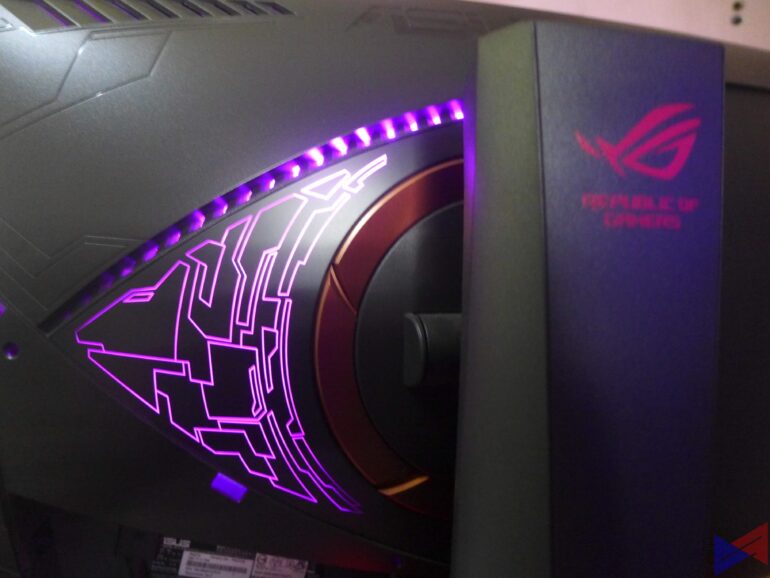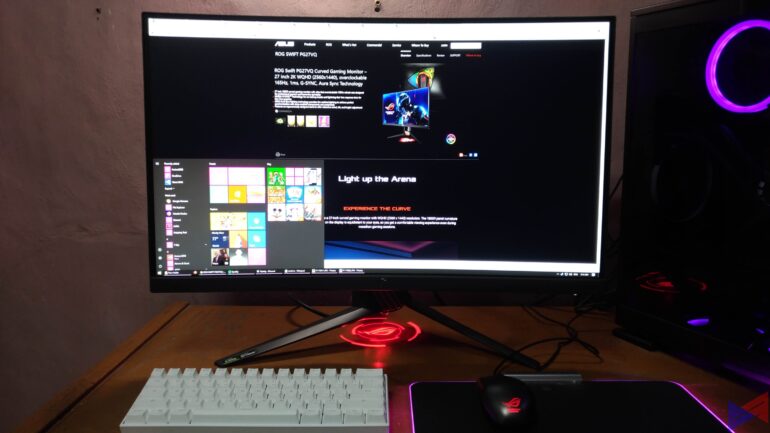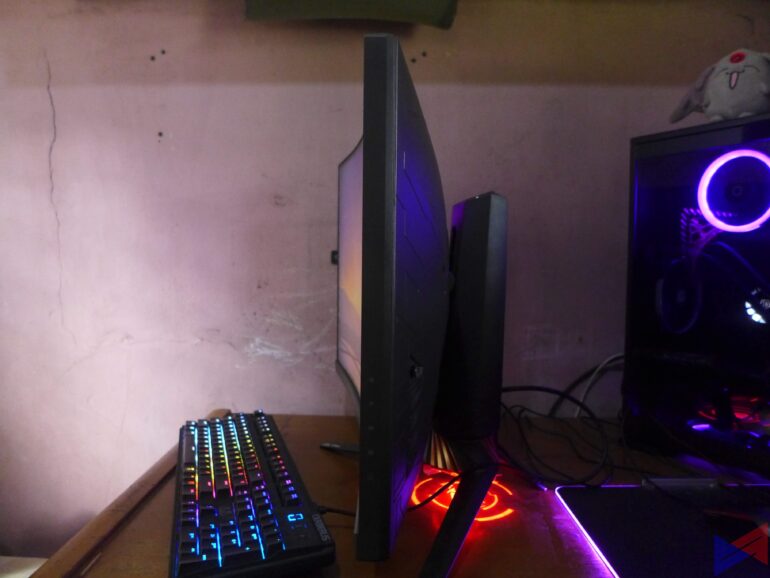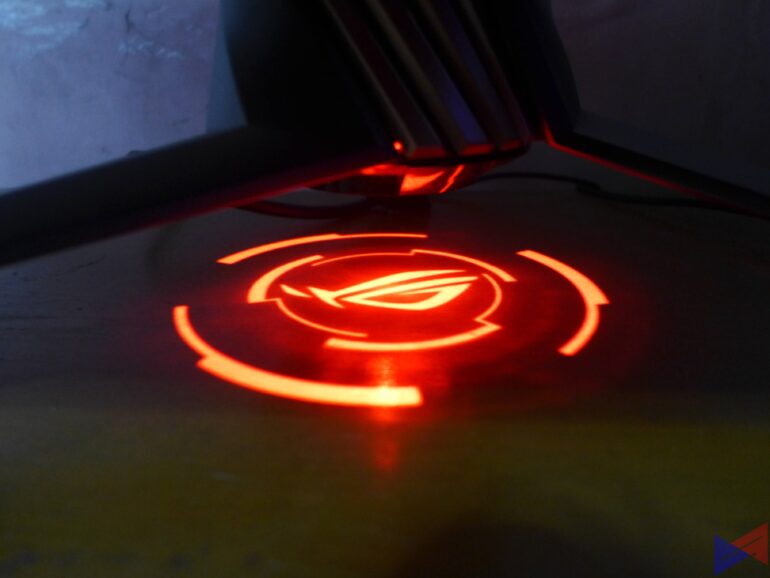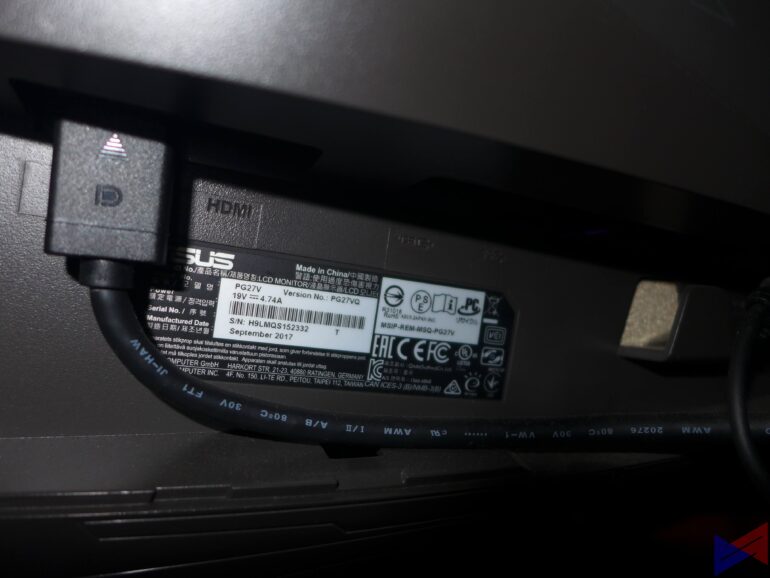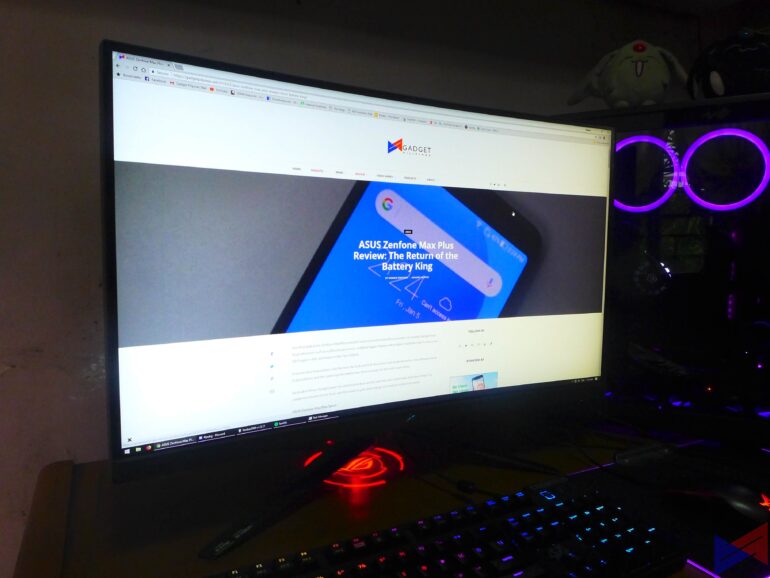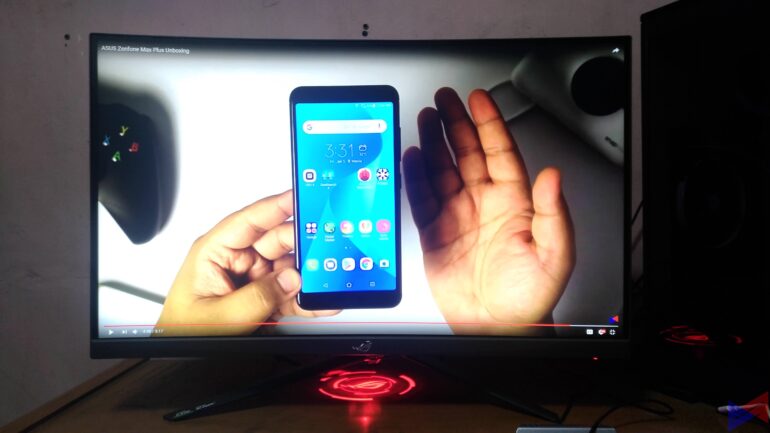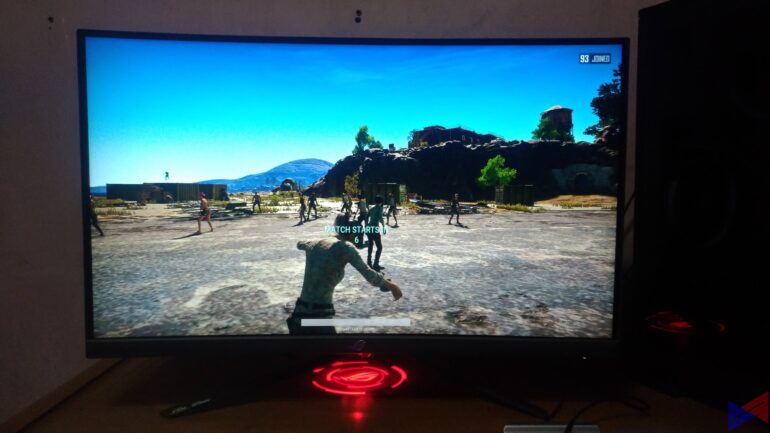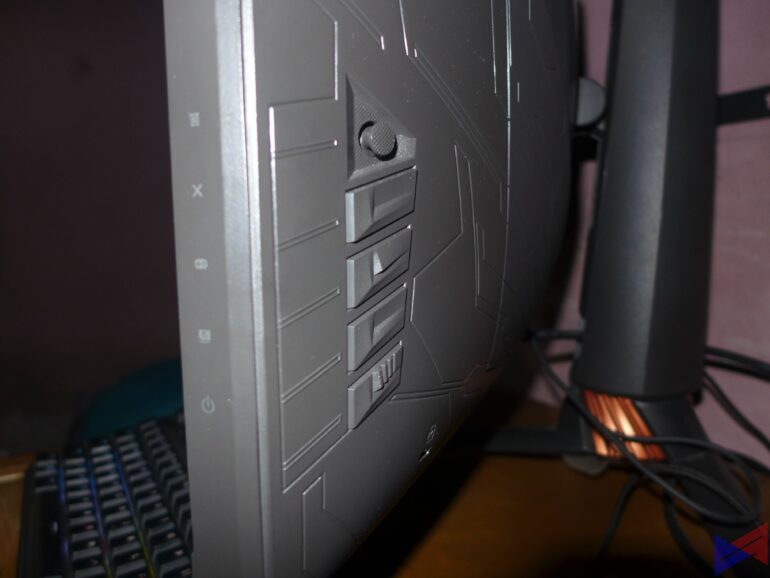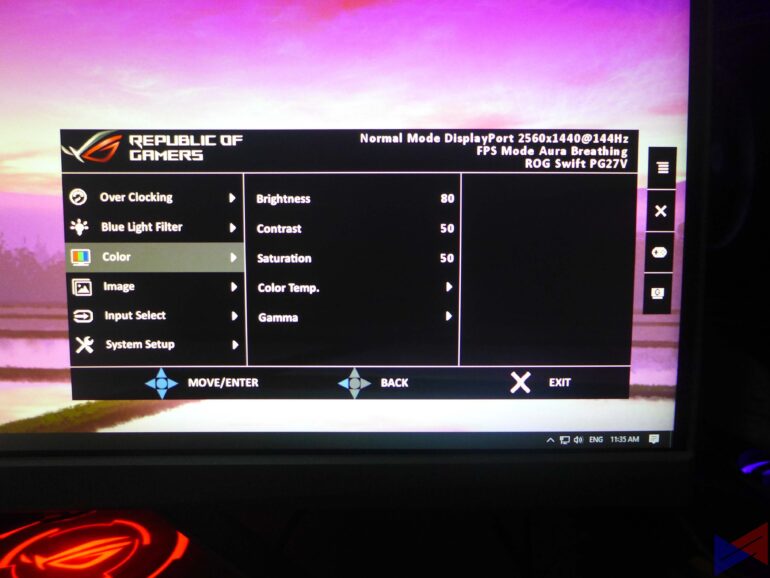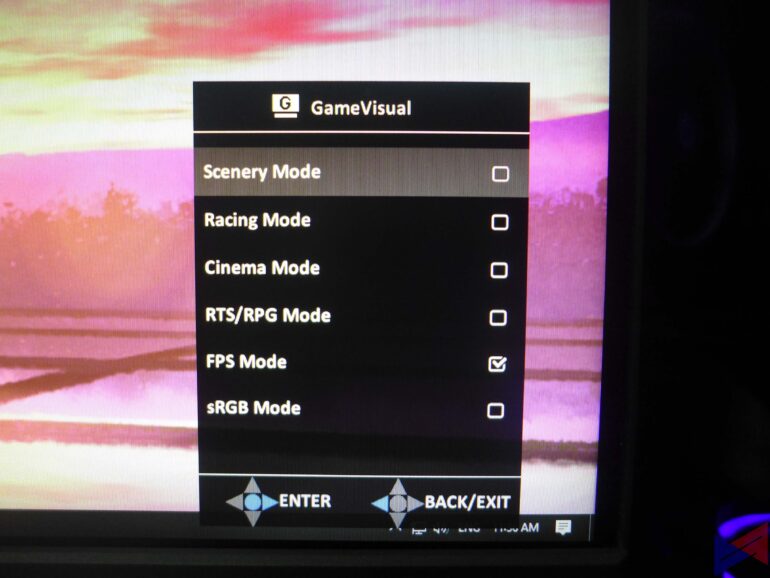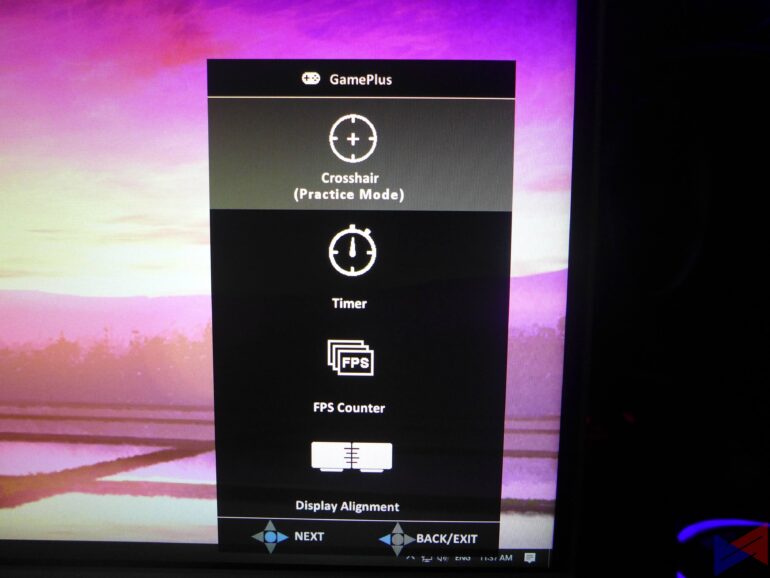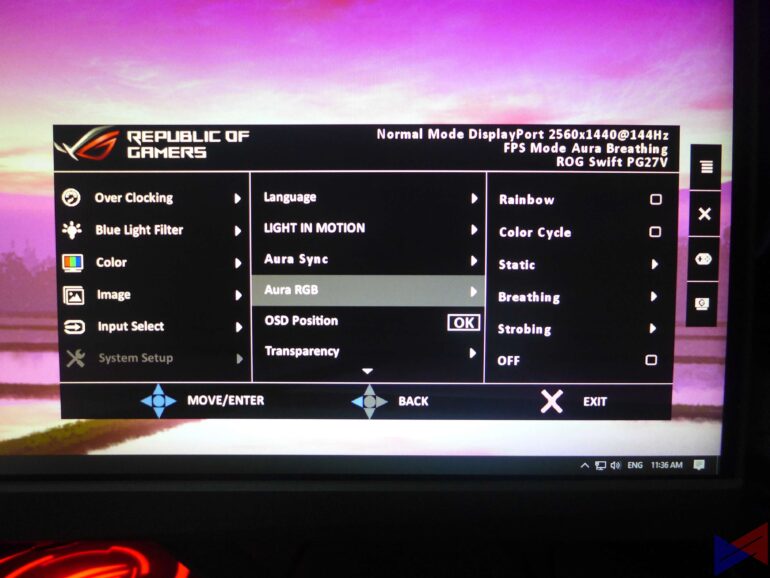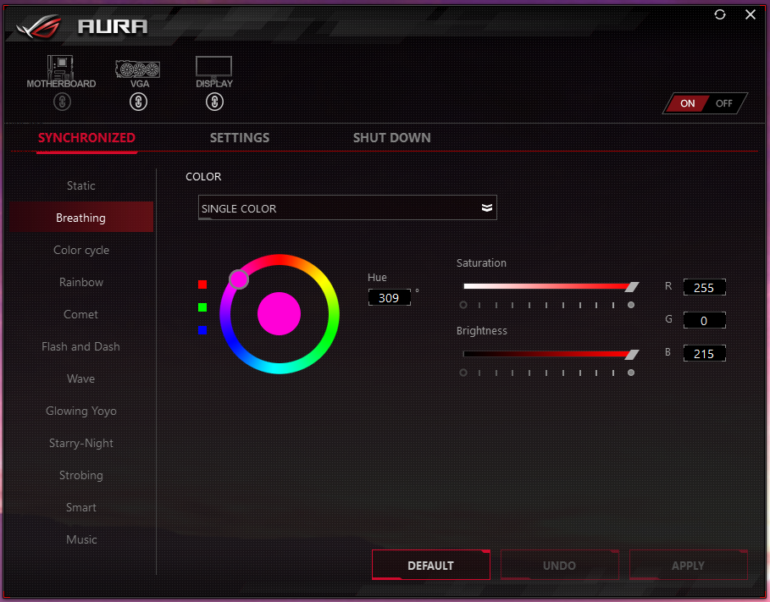Just a few months ago, ASUS launched the PG27VQ Gaming Monitor in the Philippine Market. It boasts a number of innovative features that cater to those who want to take their game to the next level with a stunning visual experience – a curved screen, up to 165Hz refresh rate, 1ms response time, NVIDIA’s G-Sync technology, and for the first time in an ASUS Gaming Monitor, Aura Sync and RGB lighting.
Of course, all of this comes at a premium. To be exact, PhP48,310. So the question now is, is it really worth that much? Let’s find out in this review.
ASUS ROG Swift PG27VQ Specs:
- Panel Size: 27.0 inches
- Panel Type: TN
- Curved Panel: 1800R
- True Resolution: 2560 x 1440
- Response Time: 1ms (Gray to Gray)
- Signal Input: HDMI 1.4, DisplayPort 1.2
- Refresh Rate: Up to 165Hz
- Dimensions with Stand (WxHxD): 614.5 x (422.2~522.2) x 268.7mm
Design and Build Quality
At first glance, the PG27VQ looks like a smaller PG348Q that we also reviewed a few months back, with its protruding chin that bears the ROG logo, the stand that has the NVIDIA stickers on it, and the thin bezels that surround the screen. It also uses the same mechanism for navigating the on-screen display, which we’ll talk about later.
The monitor offers a number of ways for adjusting its position. You can swivel it left and right, tilt it up and down, and you can adjust the height to eye level. The stand can be used as a pass through for your cables to make your setup look clean and tidy. Without the stand, its also VESA mountable, to the benefit of those who prefer a multi-monitor setup.
Like the PG348Q, it also has the Light in Motion feature, wherein an ROG logo is sort of projected at the bottom to add more visual eye-candy. Not exactly needed, but nice to have.
At the back, you’ll find the usual ports: an HDMI port, a Display Port, a headphone jack, and three USB ports – two of which are USB 3.0 high-speed ports. What’s noticeable is the addition of an illuminated section that can be configured using the ASUS Aura software, but more of that later.
The PG27VQ uses a TN Panel, which means you do get slightly washed out colors from time to time, in exchange for improved response time and power efficiency. The curved screen gives you a better and more comfortable view, not only when gaming, but also when working on documents, browsing the web, and for media consumption.
Performance
Despite being a gaming-focused monitor, the PG27VQ is also a joy to use for productivity and media consumption, as the 27-inch curved screen with its maximum resolution of 2560 x 1440 pixels allow for more data in spreadsheets, more pages in word documents, more content in web pages, and more visual zing to your movies.
Of course, we have to talk about what this monitor was made for, gaming. With fast-paced games like PUBG, the 1ms response time and high refresh rate really comes into play, significantly enhancing the user experience through unbelievably fluid and smooth motion. Of course, you have to have a capable system to actually maximize its potential.
Software
Like the PG348Q, this monitor is equipped with a very intuitive control system for navigating the on-screen menus – a joystick, which works like the analog stick of a game controller. You can use it to move up, down, and select options.
Pressing on the joystick activates the on-screen display, which shows a slew of options for adjusting the monitor’s settings. You can adjust the brightness, color, contrast, select your input source, change the language, set the transparency of the OSD, and many more.
GameVisual also offers you a number of presets for adjusting the screen’s overall color temperature, depending on what you’re doing. For this one, I prefer Scenery and FPS modes, but of course, yours may differ. Just give each option a try.
GamePlus on the other hand, lets you add a number of items to your screen, such as a cross hair and an fps counter. Not exactly something I use a lot, but it’s there for those who need it.
What’s also unique about the PG27VQ is the addition of options for enabling ASUS’ signature Aura Sync technology, which, as the name suggests, synchronizes the RGB lighting across compatible devices and components, such as an ASUS motherboard and graphics card. You can also set the monitor’s RGB effect independently.
The ASUS Aura software lets you adjust the effects for all Aura Sync enabled devices. There are numerous effects for you to choose from, apart from the conventional ones such as color cycling and breathing. Here’s a sample video of what it looks when using an ASUS Graphics Card, Motherboard and the PG27VQ.
Do note though that I did encounter an issue with the latest version of the software (1.05.31 at the time of writing), as it wasn’t able to detect my ASUS motherboard. To resolve this, I tried using another version, the one that came with the motherboard (Strix H270F), and it worked.
Verdict
The ASUS ROG Swift PG27VQ is a great monitor that comes with all the premium features you’d expect from the ROG brand. Its curved screen gives a more comfortable and cinematic view, its adjustable in almost every way you can think of, navigating the on-screen display is as easy as it can get, and the gaming performance is stellar, given that you have a capable system to take advantage of it.
Of course, it’s got RGB lighting and AURA Sync, which are great features and are sort of the bread and butter of current gaming products. But personally, I really think that the implementation in this case, is a bit lackluster. Yes, you know your monitor’s got some lighting, but what’s the point of going RGB if it’s too subtle that you can’t even see it unless you turn the monitor around?
Now I think that’s okay if this monitor is used in instances where the illuminated parts are facing the audience. But for personal use, perhaps it would’ve been better if they placed it for example, on the edge of the screen for a sort of glowing effect. Maybe it’s a design restriction, who knows?
While I really had fun using this monitor, i suggest that you get it only for the preference of a curved screen plus AURA Sync and RGB lighting. If you can forego those things, there are other ROG monitors that offer the same core features such as the 165Hz refresh rate and G-Sync for a little less.
Oh, and here’s a list of stores where you can purchase this monitor from, just in case.
Emman has been writing technical and feature articles since 2010. Prior to this, he became one of the instructors at Asia Pacific College in 2008, and eventually landed a job as Business Analyst and Technical Writer at Integrated Open Source Solutions for almost 3 years.

